Writers & Illustrators of the Future Workshop Week2023 – Day 4
Contributed by Kary English
At 2:00 p.m., the weary writers straggled back into the workshop room. Each one had written and delivered a complete short story in 24 hours or less. The stories ranged from 3,000 words to more than 8,600.
Jody Lynn Nye and Tim Powers discussed marketing, copyrights, worldbuilding, developmental vs. copy editors, what happens to a manuscript after an editor buys it, and the pros and cons of indie or self-publishing.
When Powers and Nye finished, they introduced Robert J. Sawyer, the first of many award-winning, bestselling authors, all luminaries in their fields, brought in by the Contest to share their wisdom with the writer winners.
Judge Rob Sawyer, author of more than 25 novels, spoke to the writers about the many opinions they’ll find in publishing, and the workshop being a smorgasbord of ideas. The goal, said Sawyer, is to decide what’s right for your publishing career. Sawyer emphasized the importance of a writer’s first decade as a professional because those are the years that set the standard for the rest of their careers. He encouraged the writers to manage their careers in a way that leaves them feeling fulfilled as an artist. He recalled a quote from Isaac Asimov, “If I make myself and my readers happy, in that order, then I am content.”
Author and editor Lezli Robyn regaled the writers with the story of how buying a book signed by Anne McCaffrey led to years of correspondence with author Mike Resnick. Correspondence led to writing collaborations, and the collaborations showed Resnick that Robyn had an editor’s insights and an editor’s mind, which led to Robyn’s current position as the editor of Galaxy’s Edge magazine. Robyn covered an assortment of dos and don’ts for submitting to magazines.
Judge and author Nancy Kress talked to writers about things she wished she’d known when she started. Kress started her career as a pantser. It worked, she said, for short stories and her first novel. But after that, Kress faced challenges that she only resolved when she became a more structured writer. “Structure,” said Kress, “is hardwired into the human brain.” Everything that happens in a story must drive toward the ending. Your characters must want something, and the stronger they want it, the stronger it will drive your story.
After an already full day, the writers gathered in the art room for one of the Contest’s signature moments—the big art reveal. The room bubbled with tense excitement. For the writers, this was the first time their work had ever been illustrated. What if they couldn’t find the illustration that matched their story? Or worse, what if they didn’t like it?
Fear not, dear reader. This has never happened in the history of the Contest.
The writers filed in, moving from easel to easel, searching for images from their stories. When they found their illustration, they reacted with hugs, gasps, and some with happy tears. Then the artists arrived, explaining to each writer how they chose which scenes or characters to illustrate. A framed, art-quality print will go home with each writer as part of the Contest’s prize package.
After dinner the writers gathered to read the 24-hour stories chosen to workshop. When they were done, John Goodwin arrived to coach the winners on their acceptance speeches for the awards gala on Friday.
By the end of the night, the writers were exhausted, but happy.
Illustrators’ Workshop—A Full Day and the Big Reveal!
Contributed by Martin Shoemaker
At the start of a busy day, the illustrators gathered to hear Judge Lazarus Chernik talk about preparing and presenting your portfolio. He advised them how to make a portfolio website that’s easy for the client, even if that’s more work for the web designer. He also talked about turning that initial contact into a relationship based on trust. He finished with a discussion on the importance of branding, including social media.
Next they heard from Judge Val Lakey Lindahn. She introduced herself and her work and the importance of being a professional. She spoke about her process, involving traditional and digital media, models, handcrafted props, makeup, and good tools. She illustrated these points with samples of her work through the years.
Then Judge Ciruelo joined via Zoom to discuss his work and career, with a theme of Art and Soul. He spoke of how he launched his career with commercial and genre art that helped him grow; but he eventually wanted to control his choices of projects and media, leading him to launch his own studio and publishing house.
Next the illustrators were joined by Judge Bob Eggleton for another perspective on a career in art: “Forty years without a real job,” as he described it. He was fortunate to start young with a lot of family encouragement, leading to illustration work early. He showed off some of his “pet projects,” fit around and supported by his commission work, alongside his illustration work through the years.
After lunch, live figure drawing salon—two costumed models in fantasy costumes assumed a variety of poses for the illustrators to draw. It was a wonderful opportunity for the illustrators.
After a break, the instruction resumed, with Judge and past winner Brittany Jackson (Volume 24) discussing her career in commercial illustration and books. She described the process by which she got certain jobs, showing the resulting work as she spoke. Then she gave the illustrators an assignment to relate one of their existing works to a word or concept that matches a client’s expectations.
Then at last came the Big Reveal! The illustrations commissioned for Writers of the Future Volume 39 were on display. The writers came in to locate the illustrations for their stories. There were smiles all around as writers saw their stories come to life, perhaps their first illustration ever, and illustrators watched their reactions and explained how they created the works.
After dinner, Judge Craig Elliott joined via Zoom to discuss the world of concept art, such as used to plan the look and style of a film. He explained that this is a very collaborative field, and concept artists must learn to contribute to a shared vision and accommodate the ideas of others.






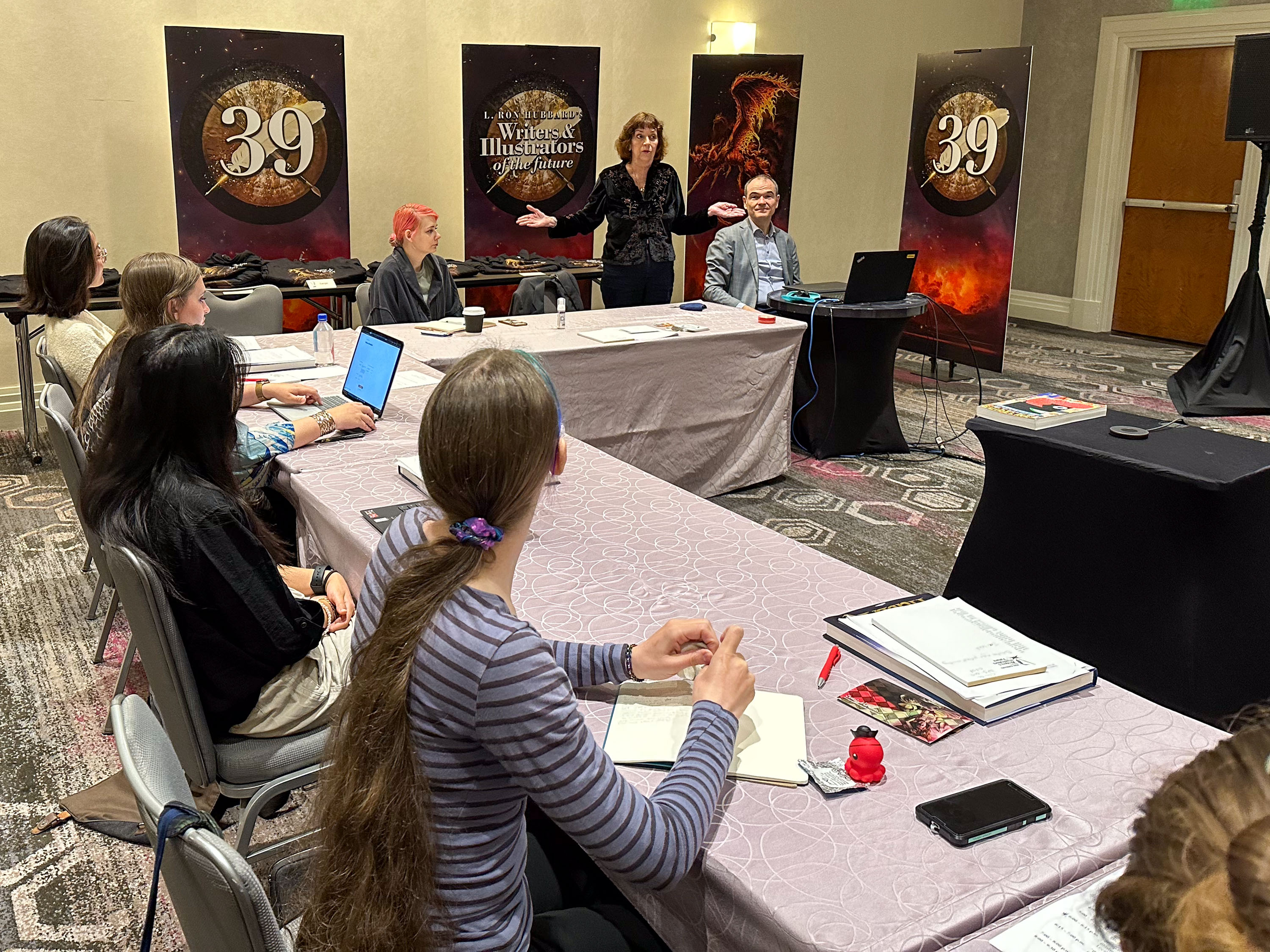

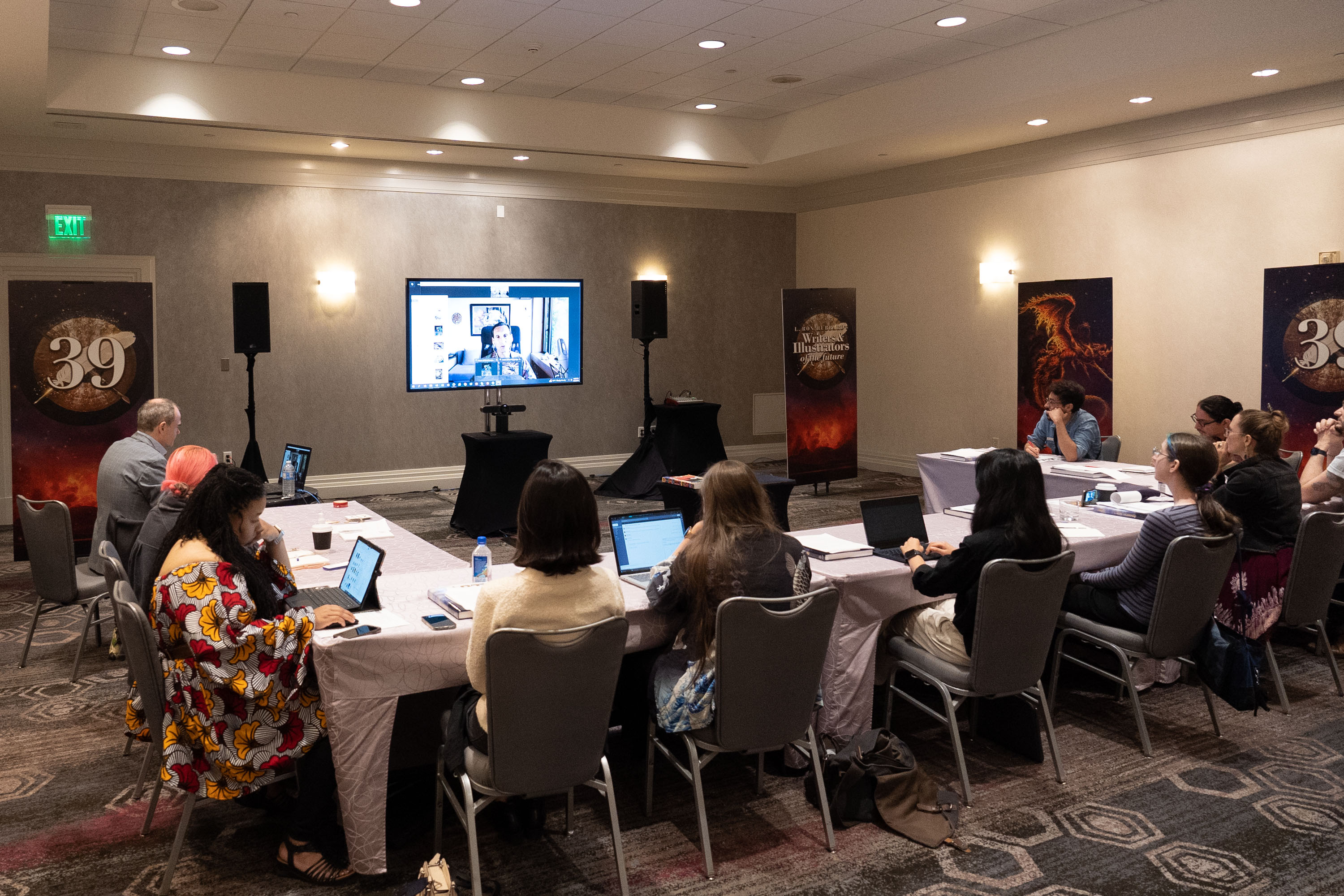
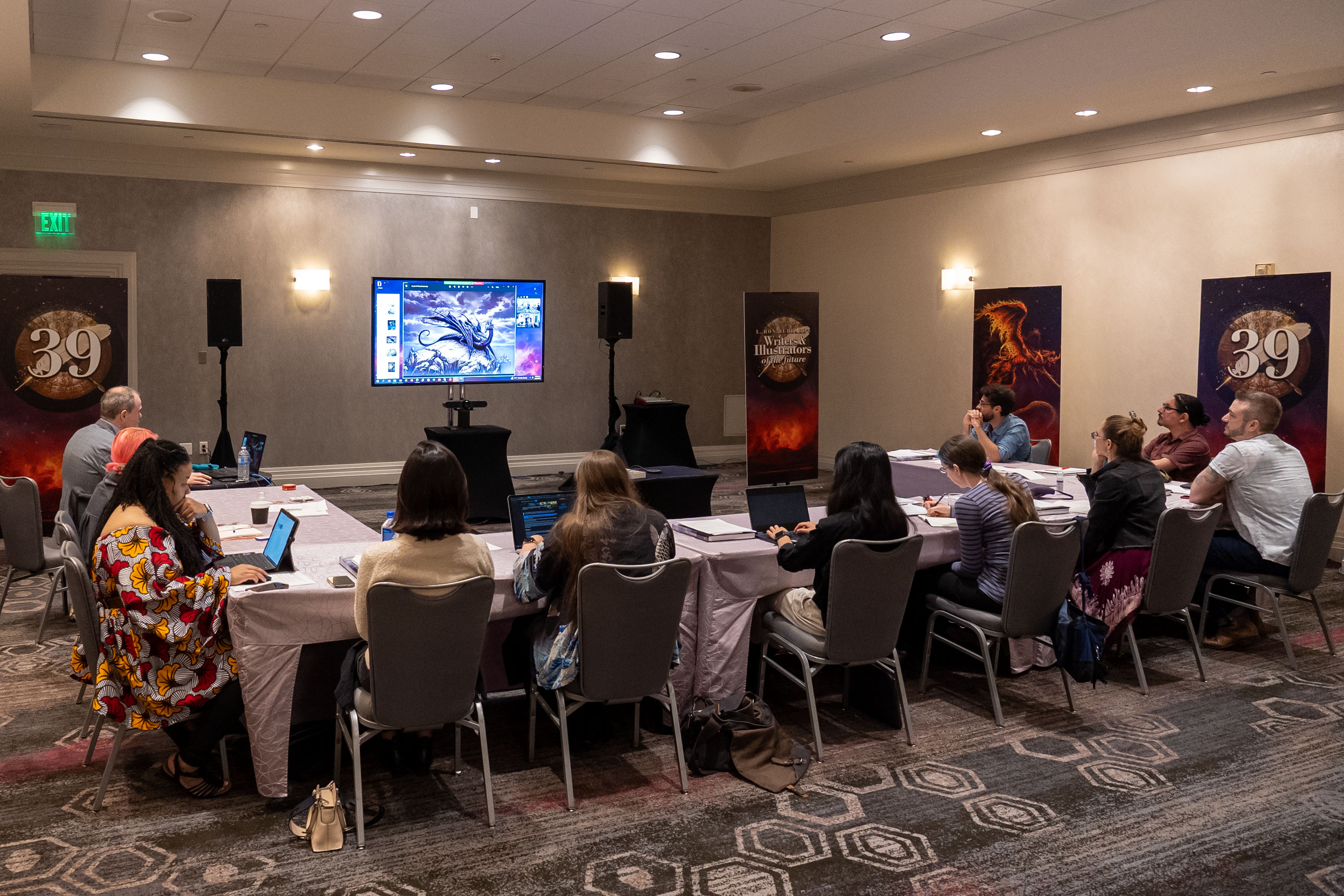



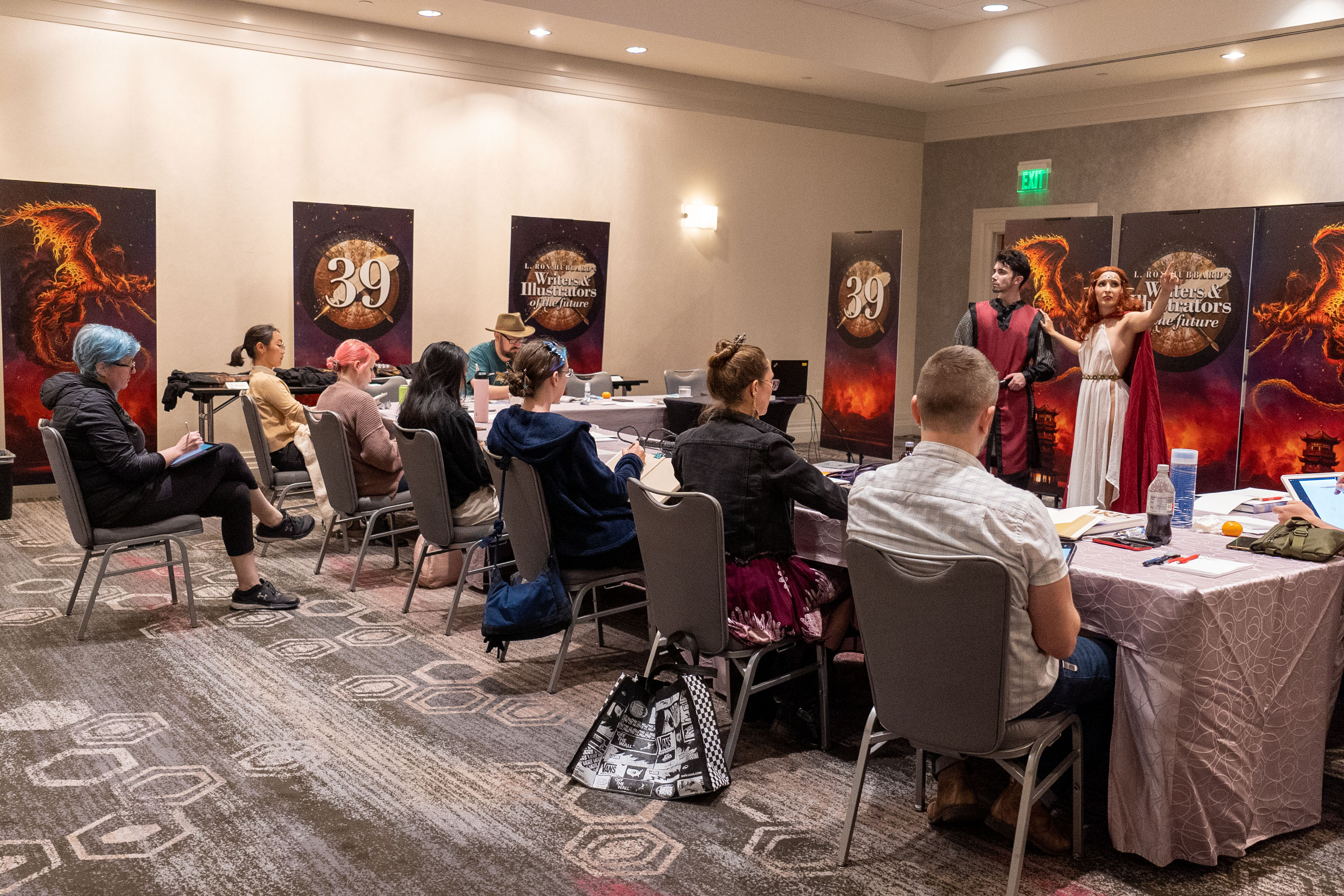
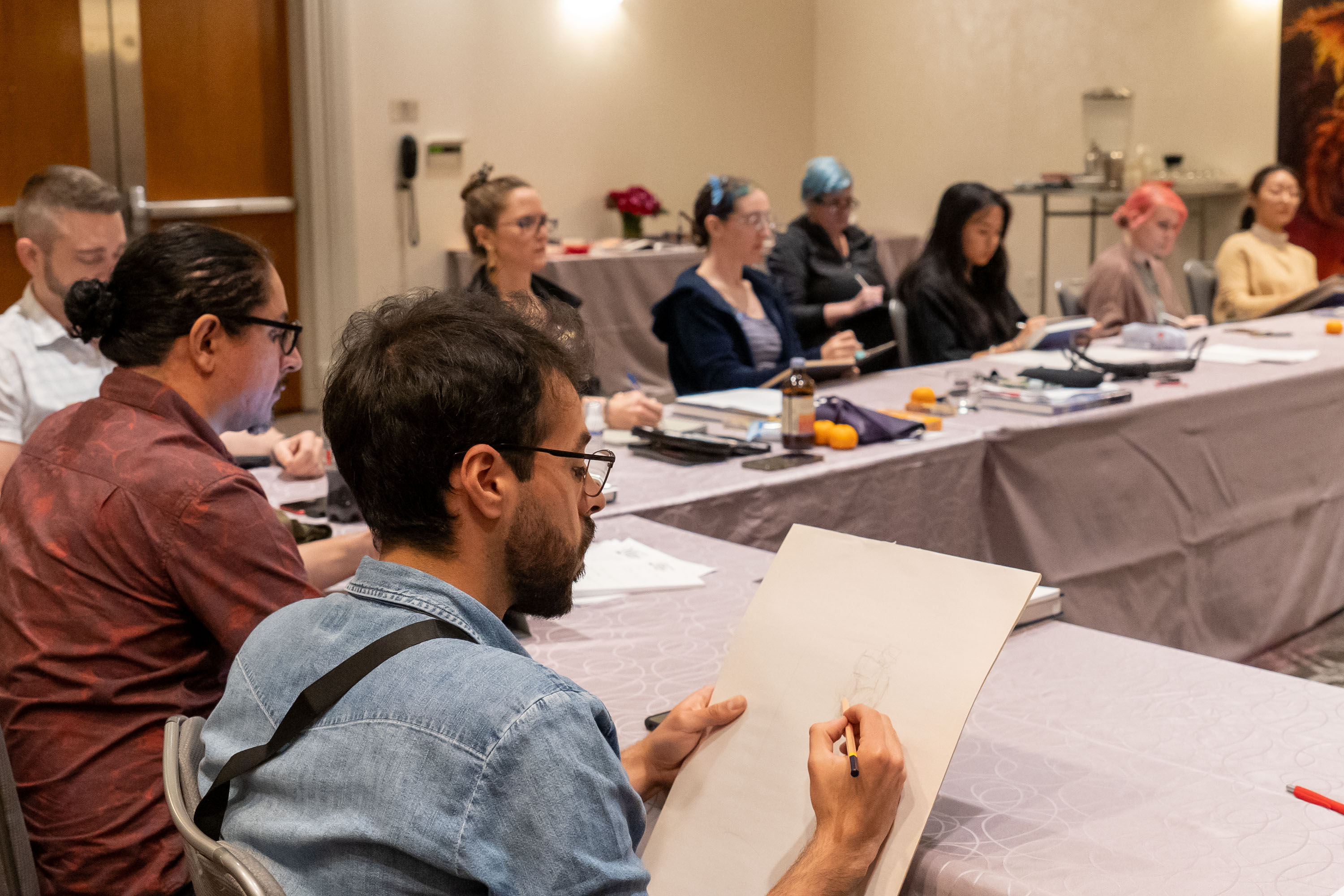
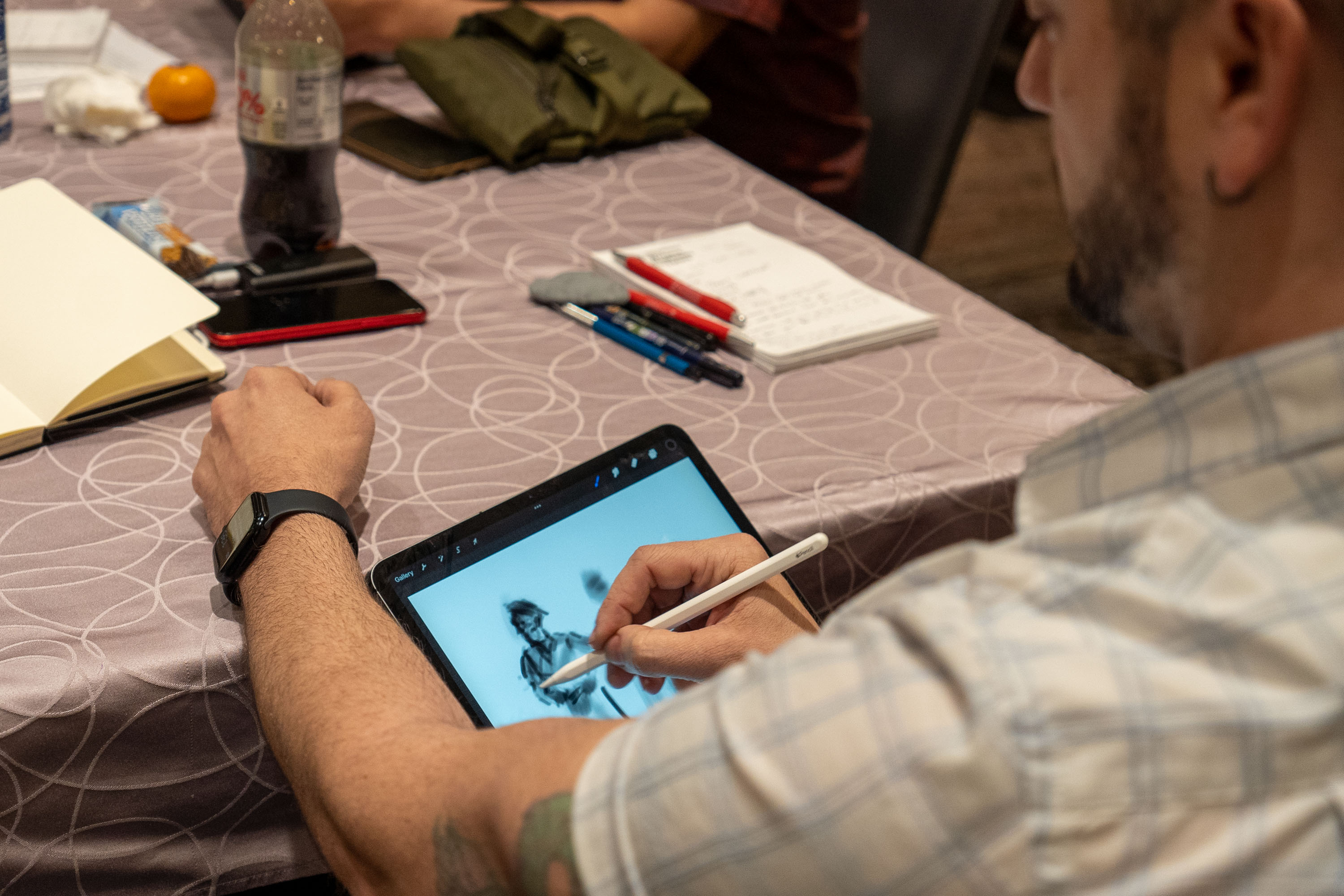




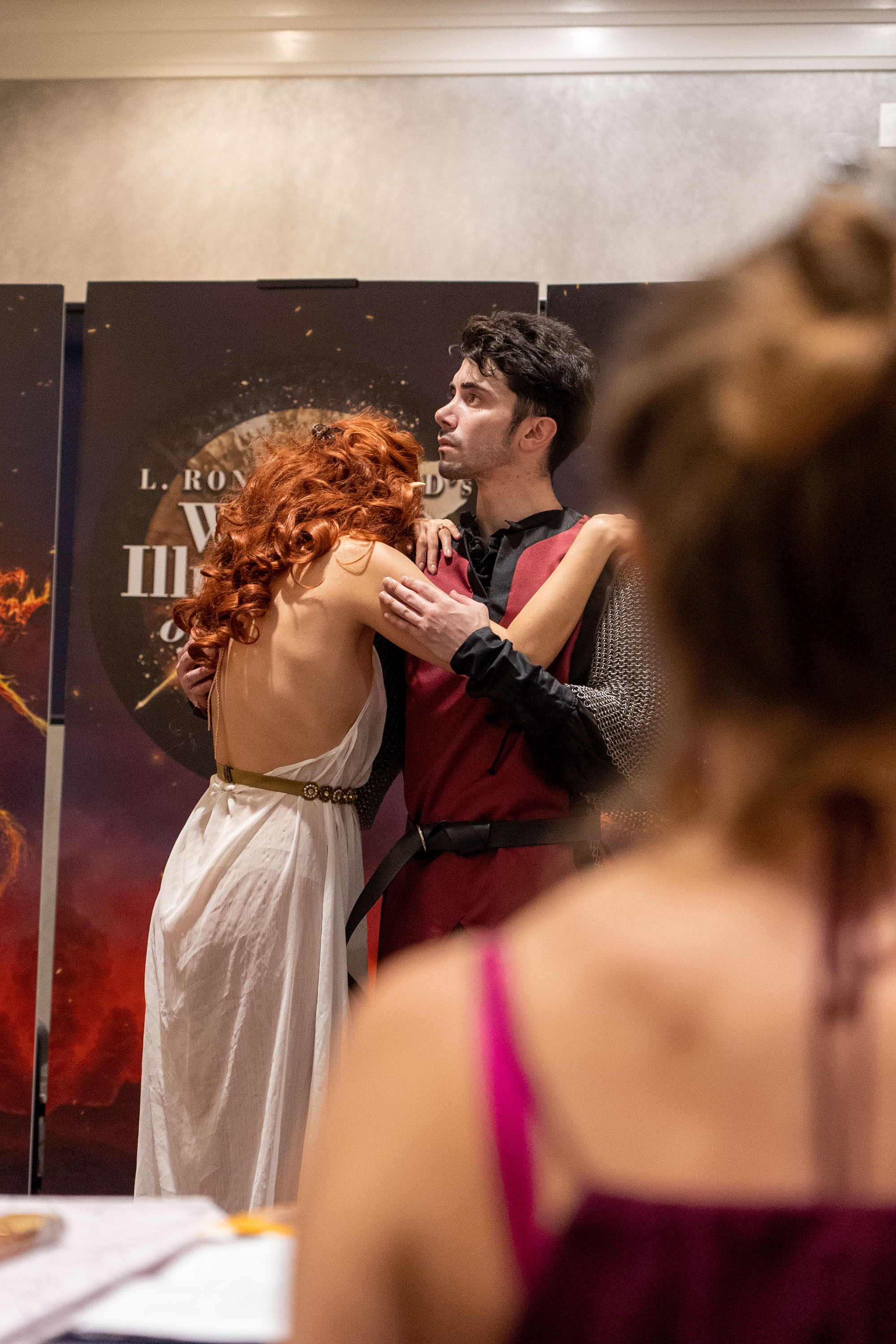
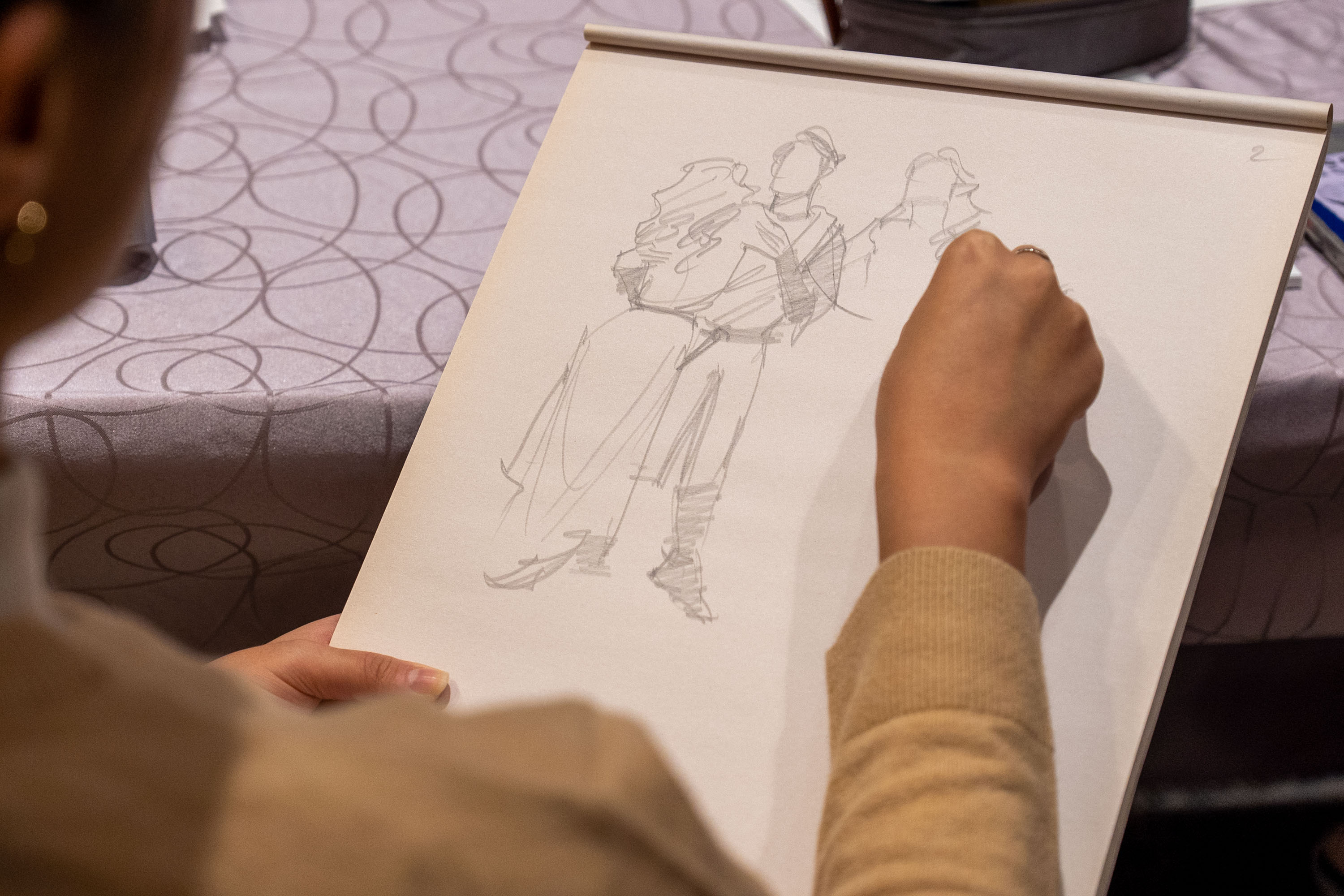


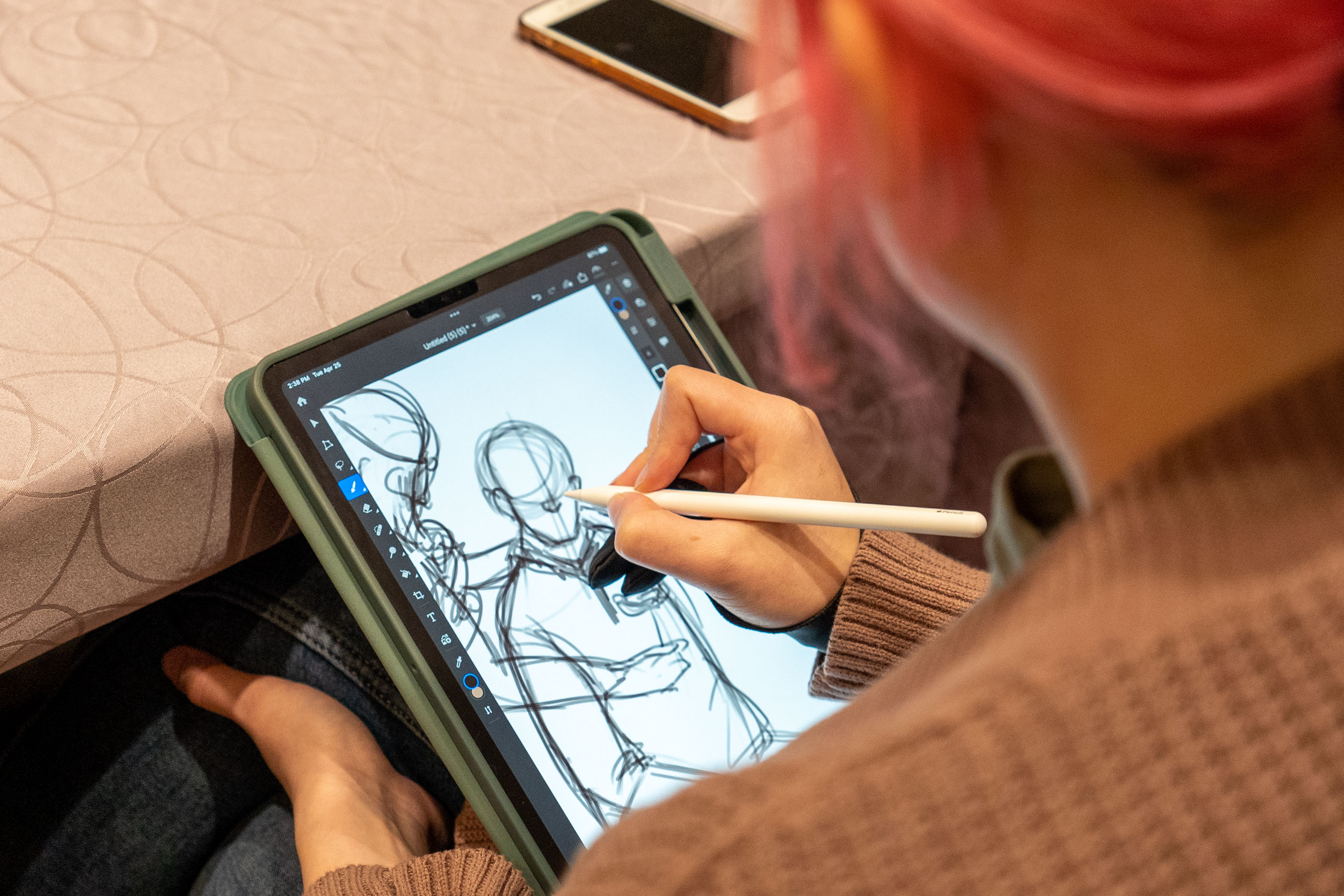



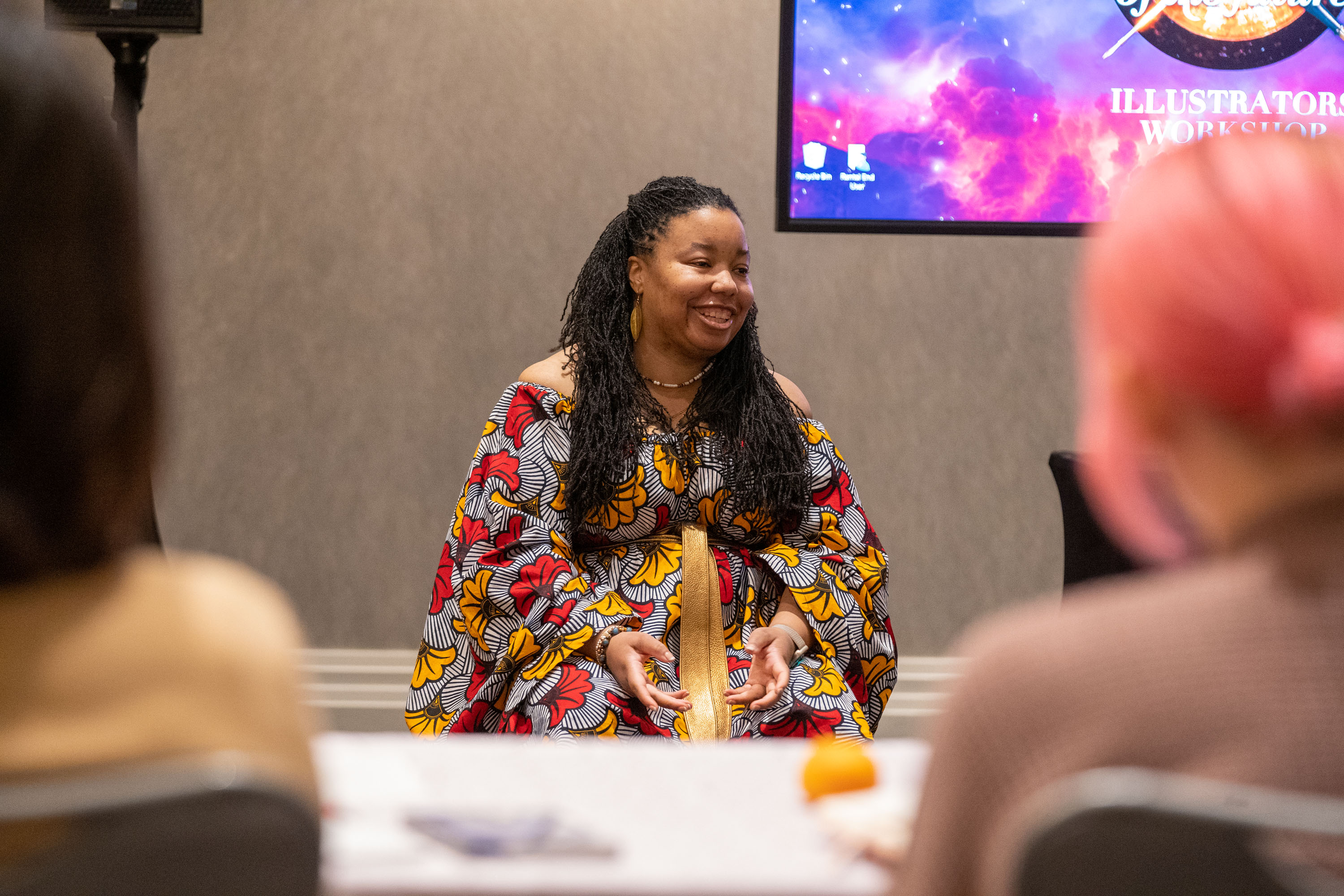
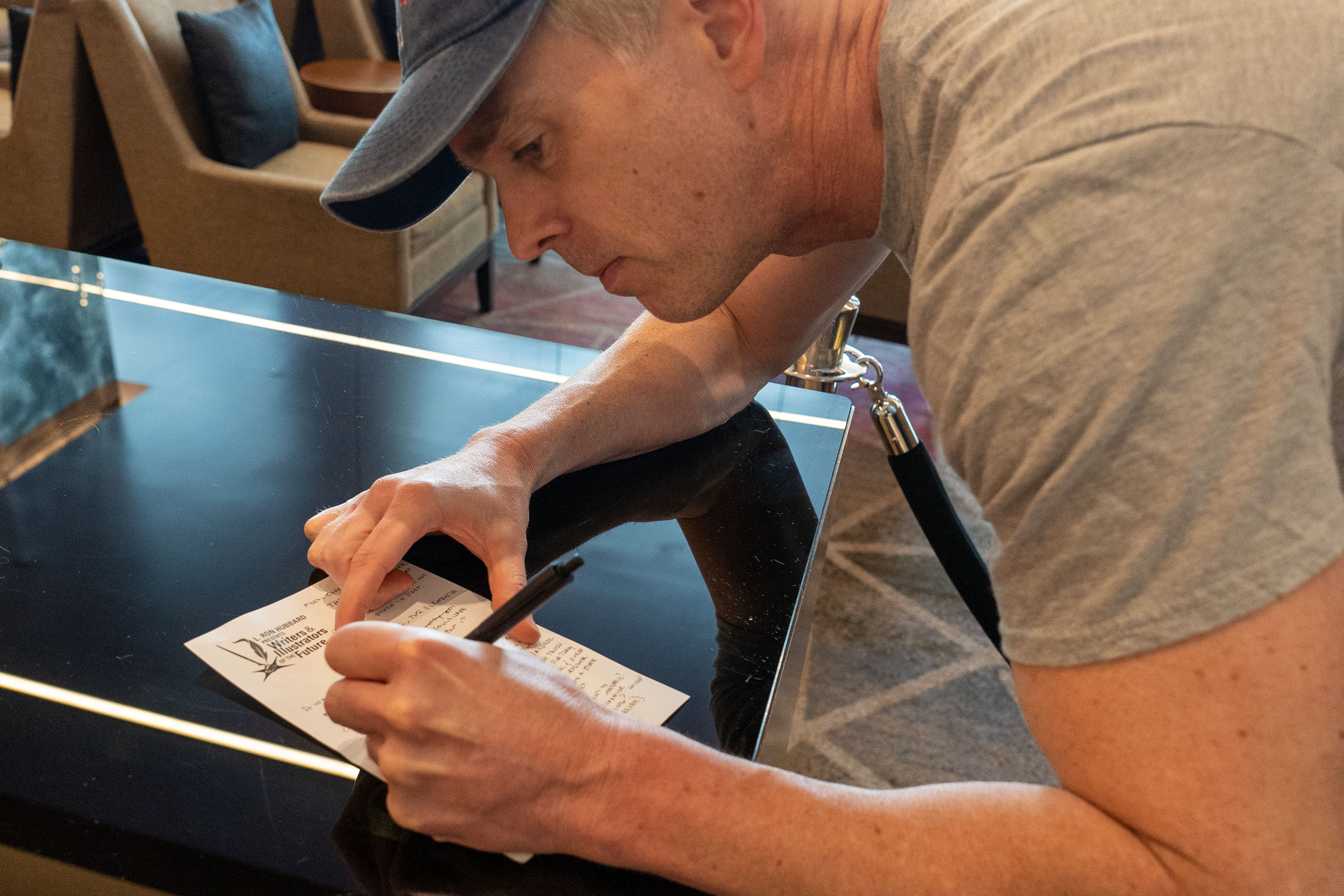
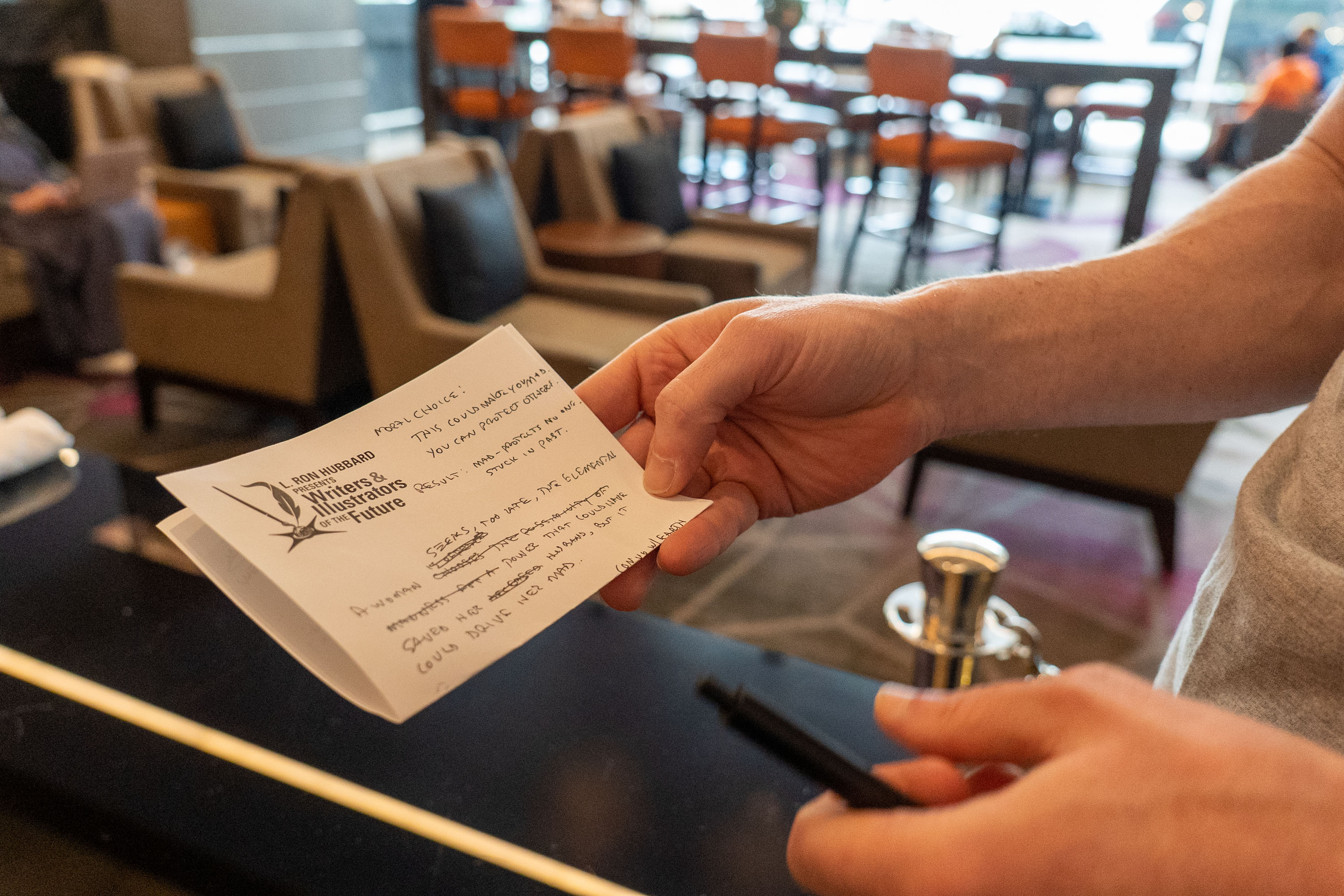
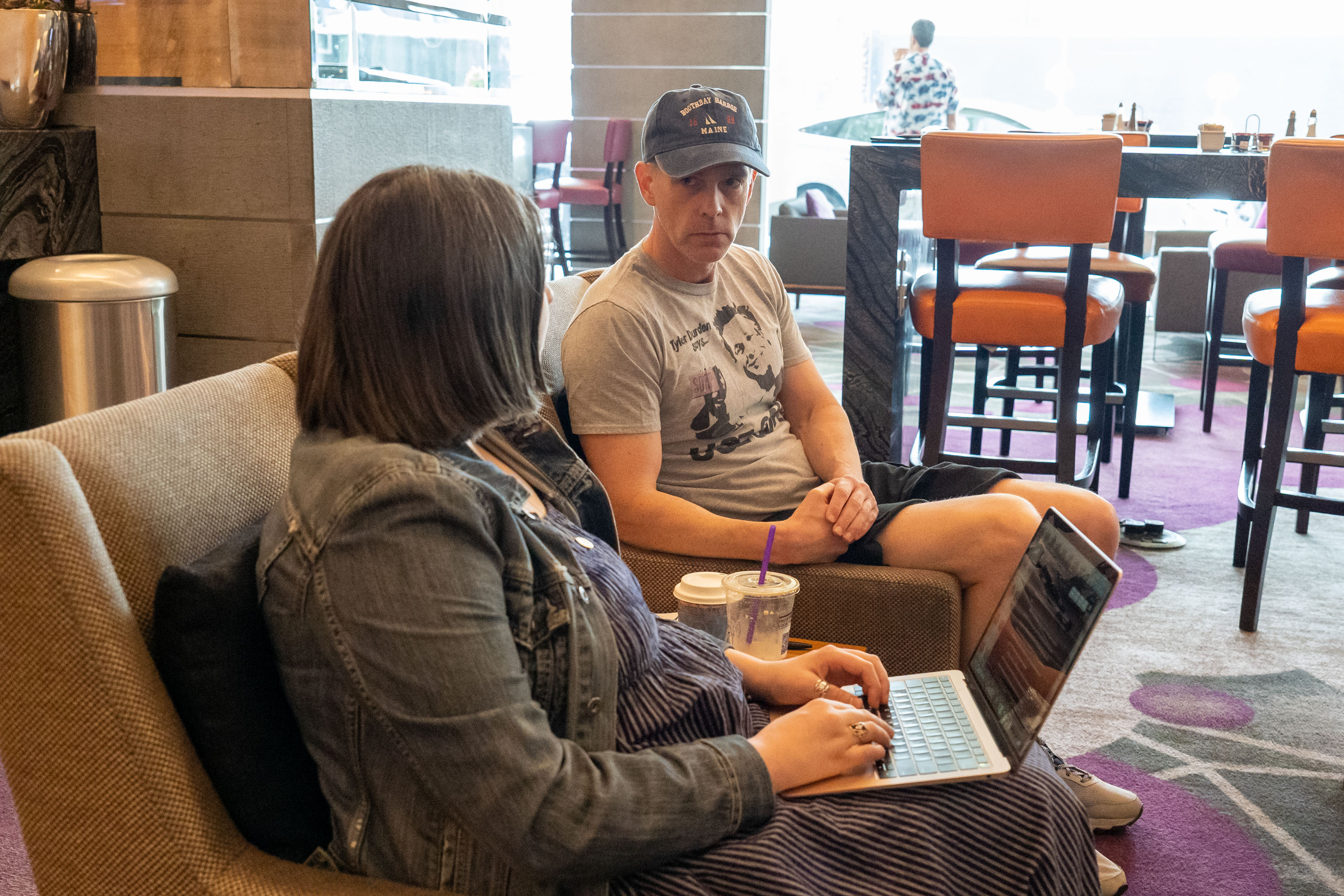

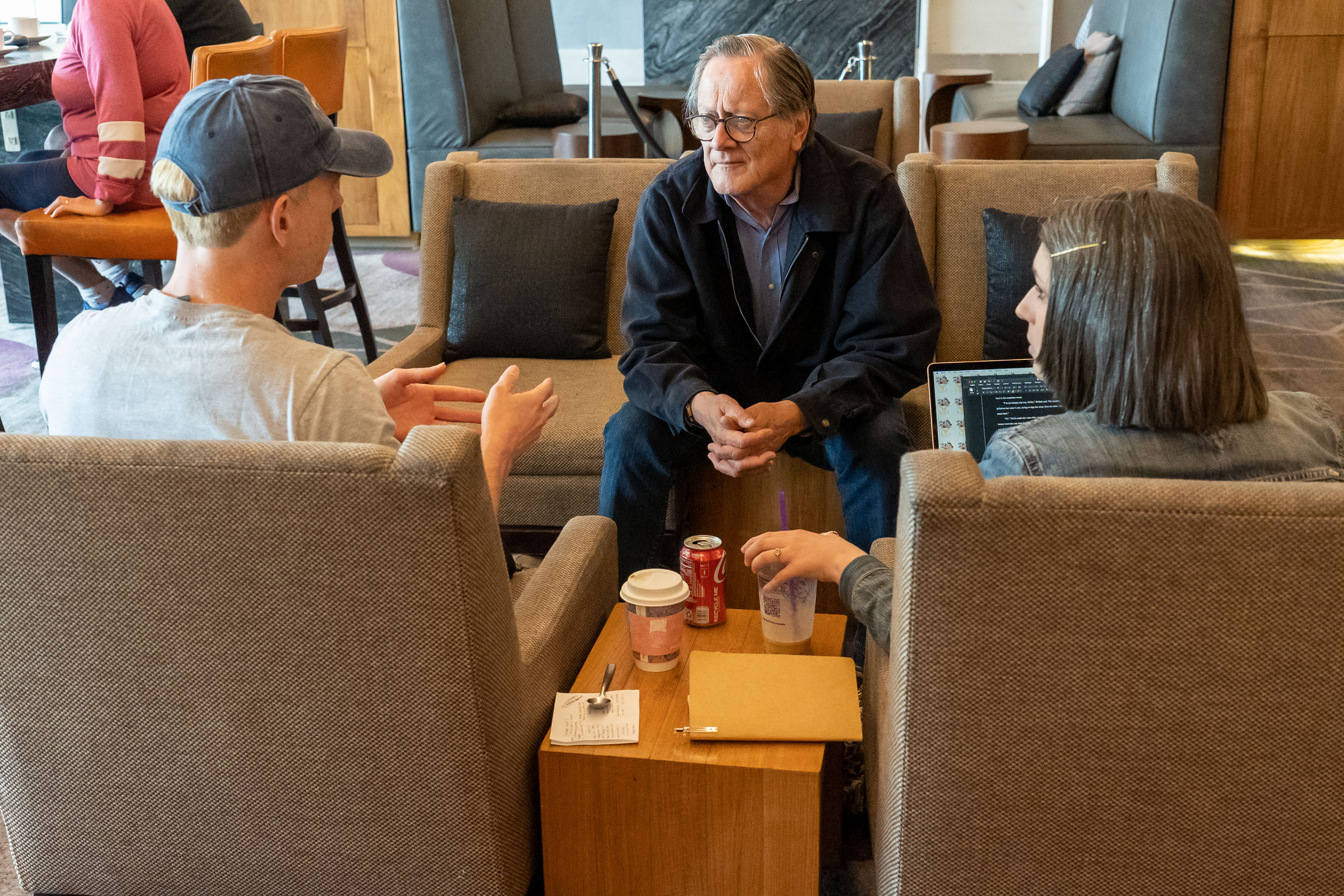
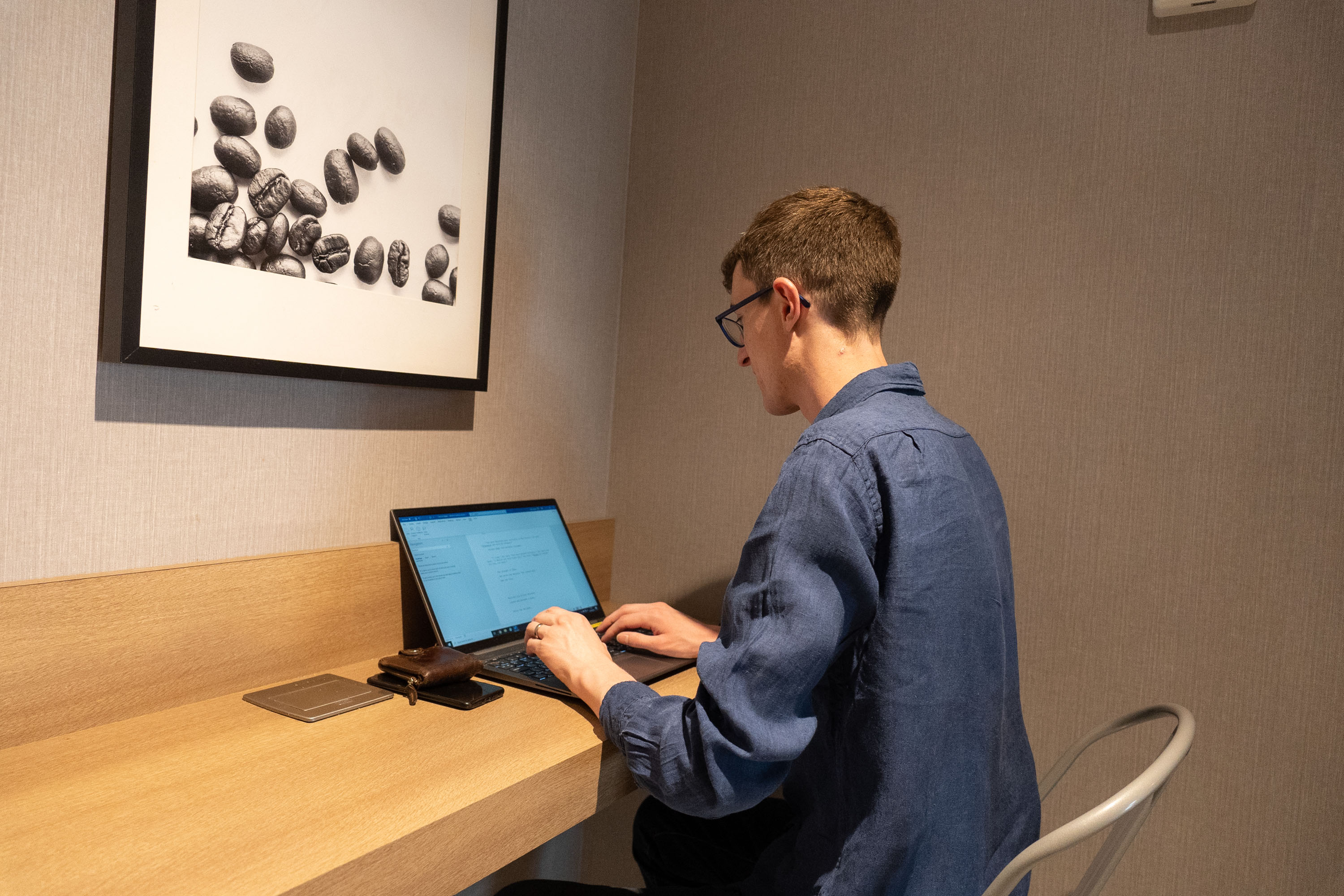

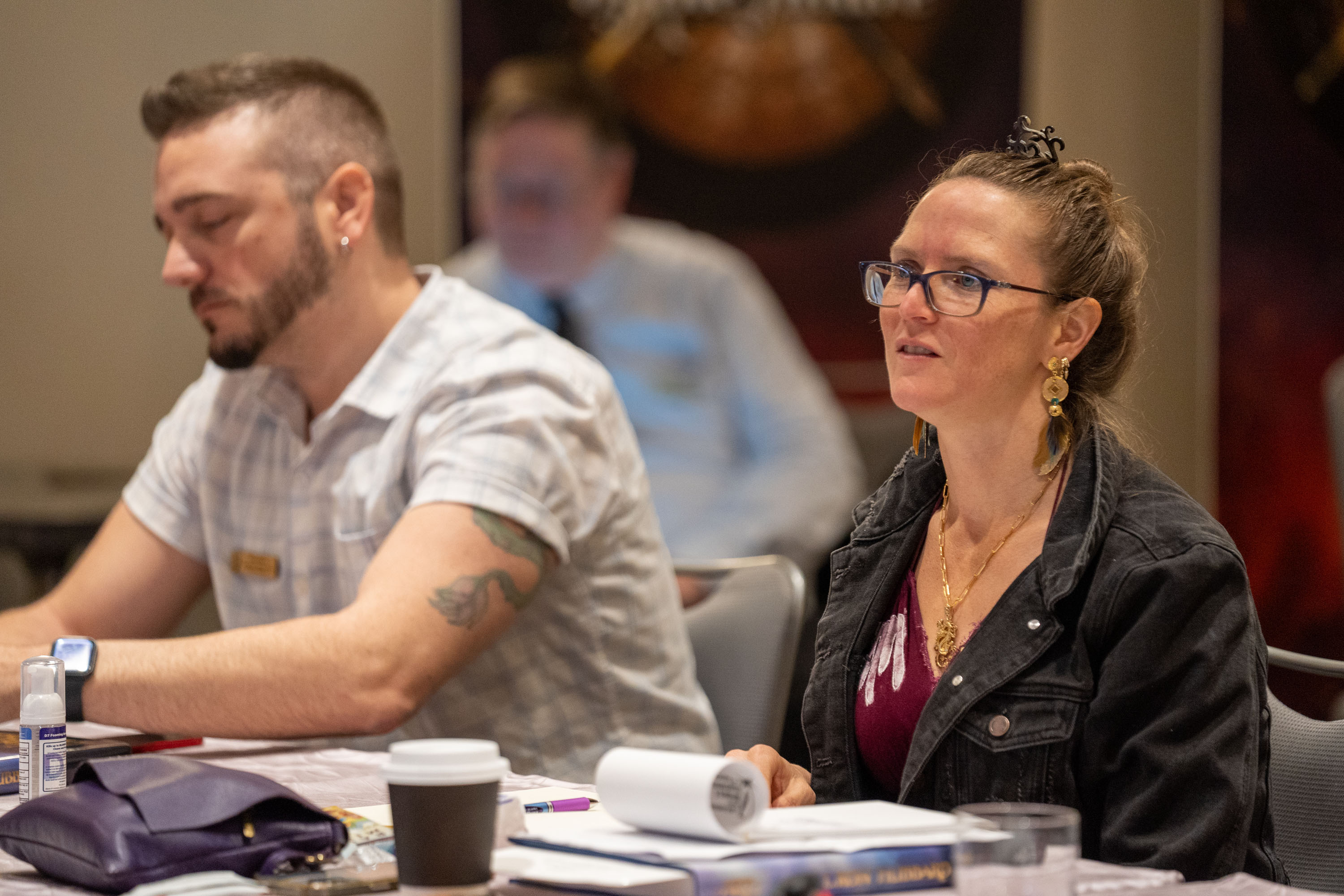

































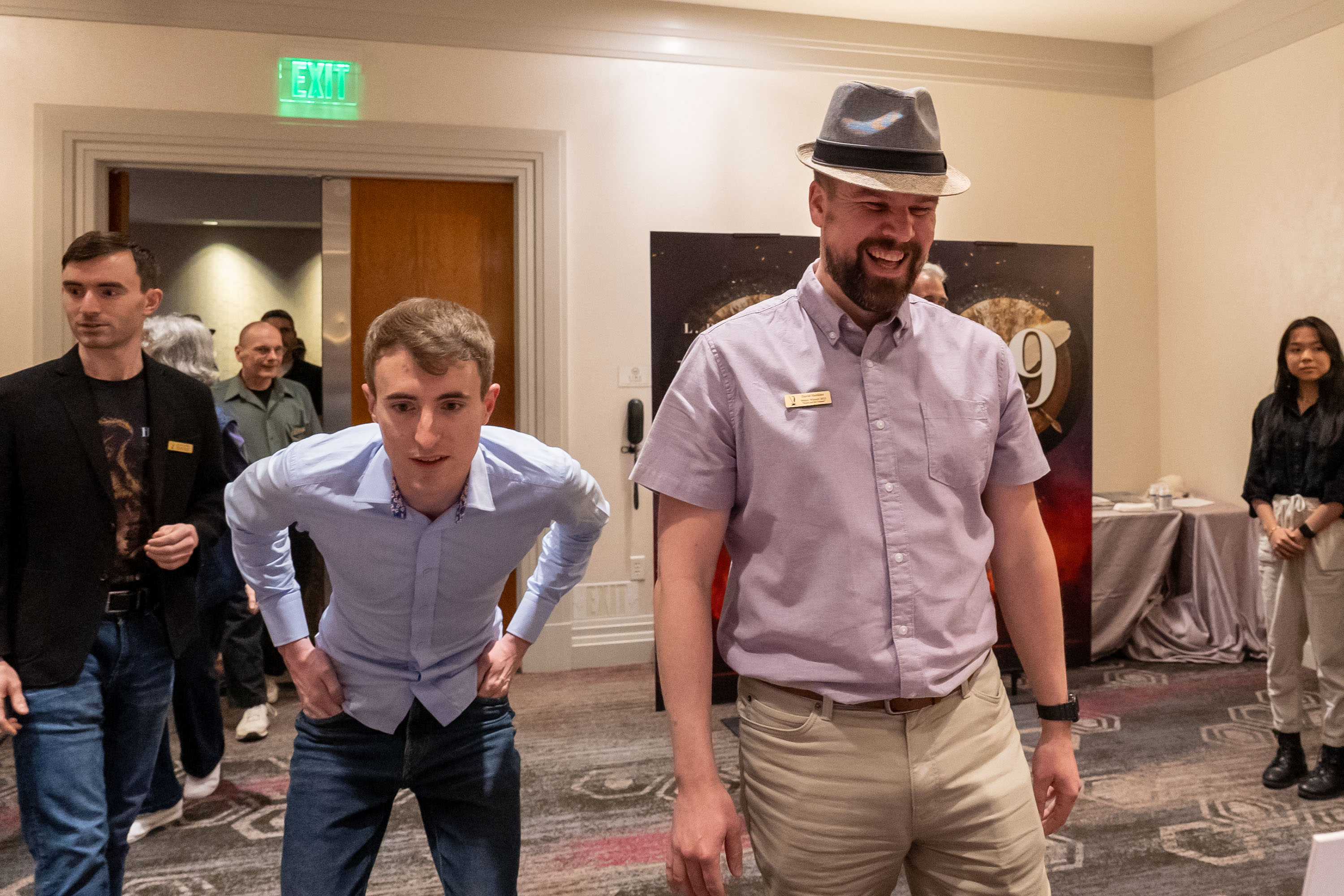




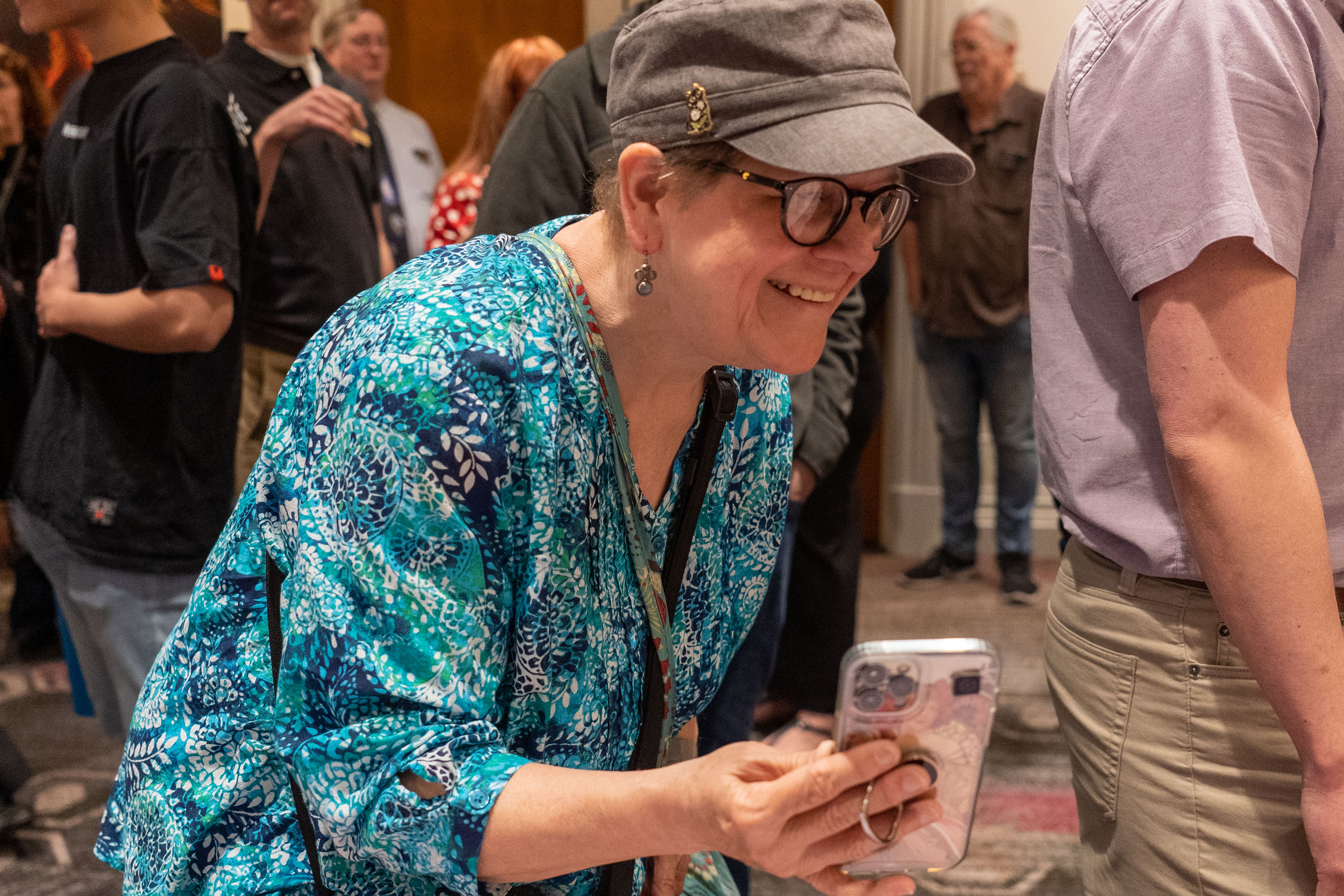
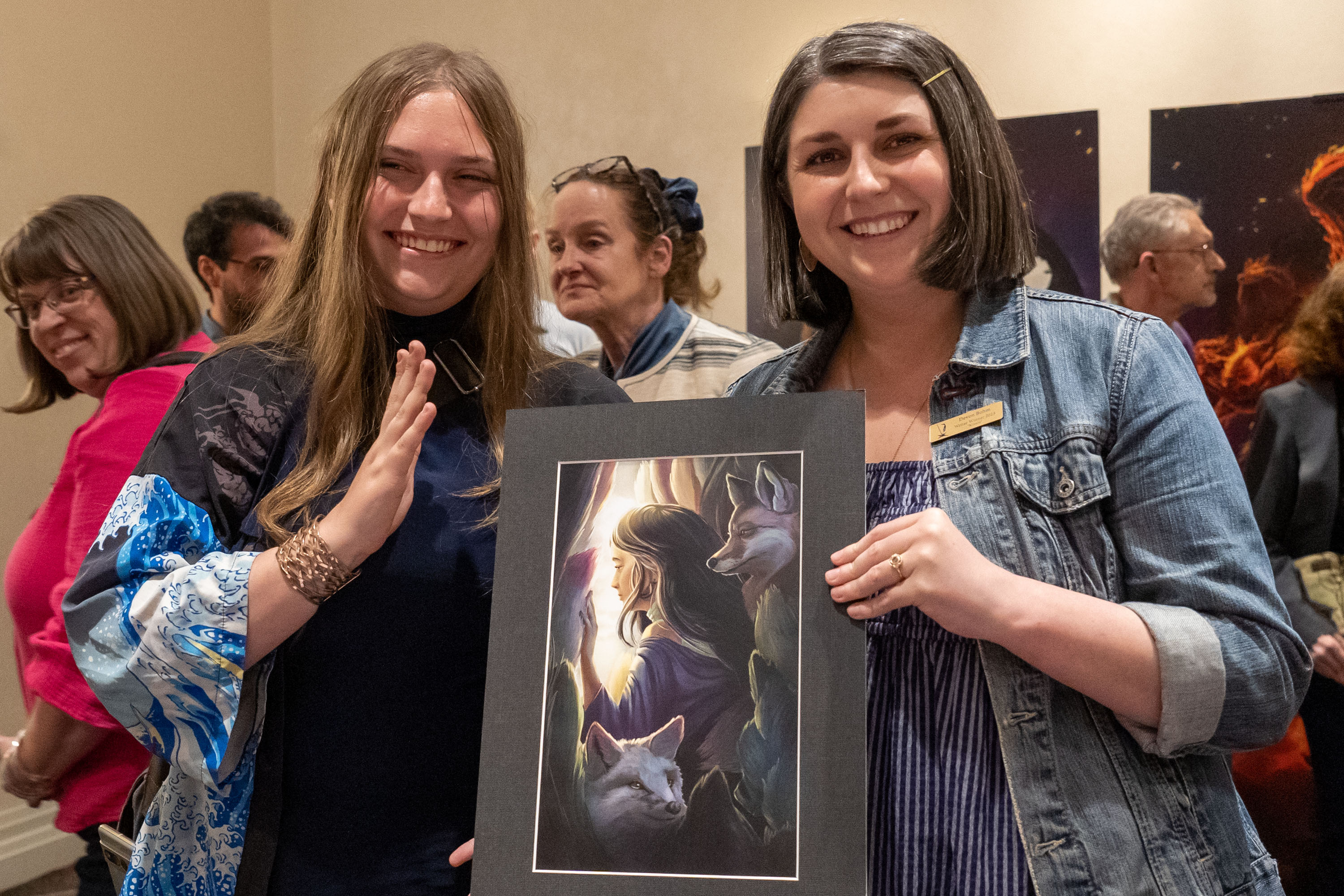
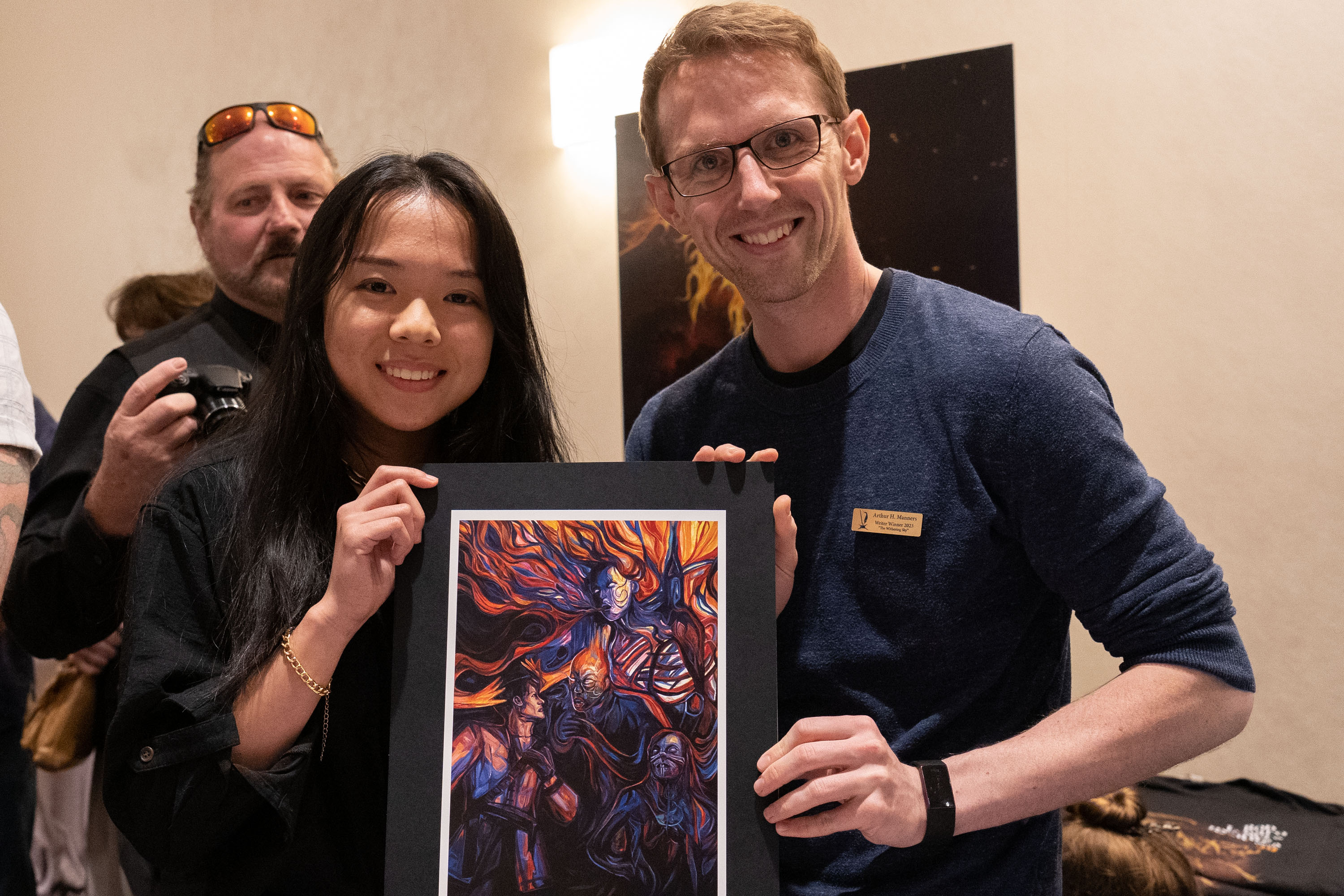

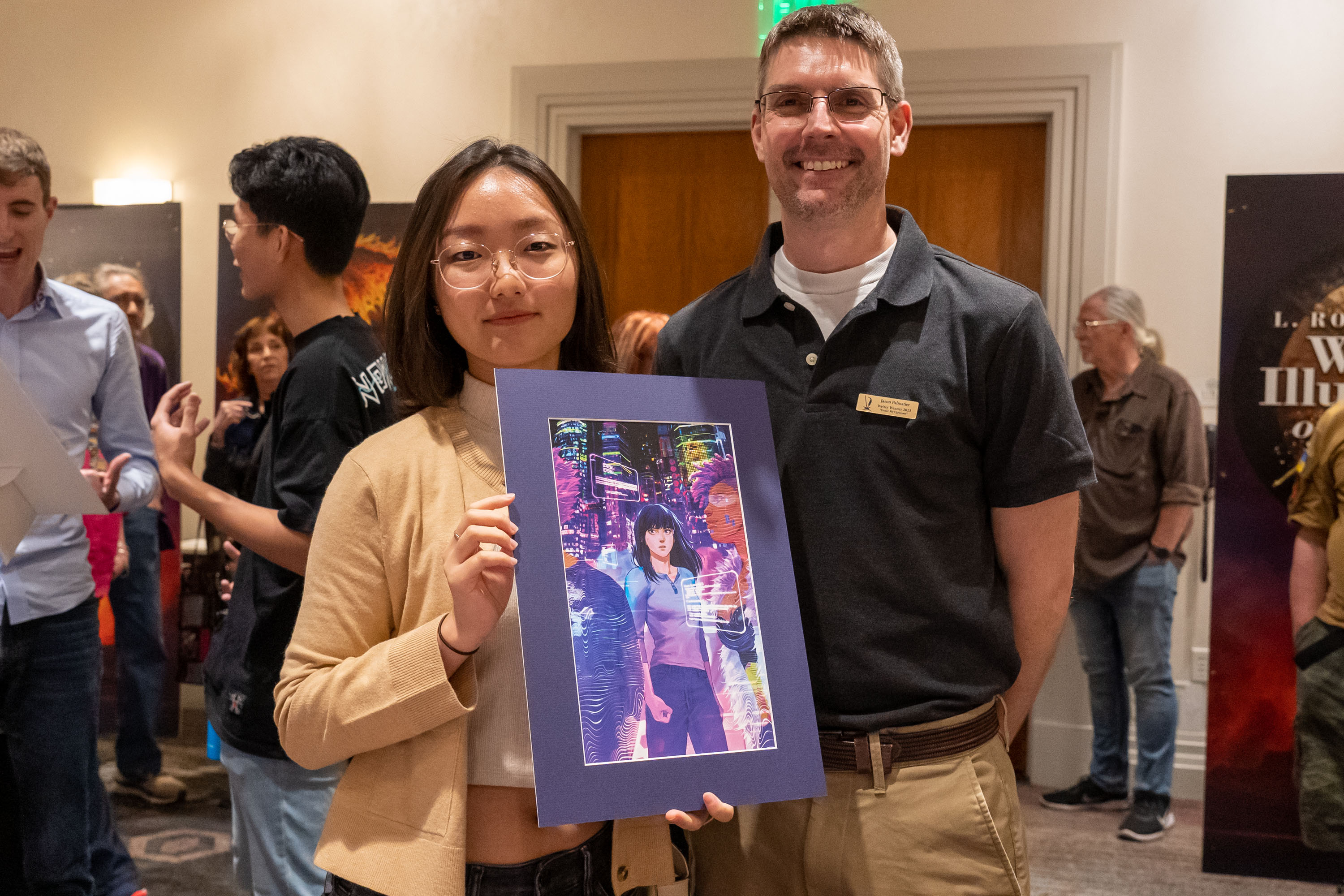


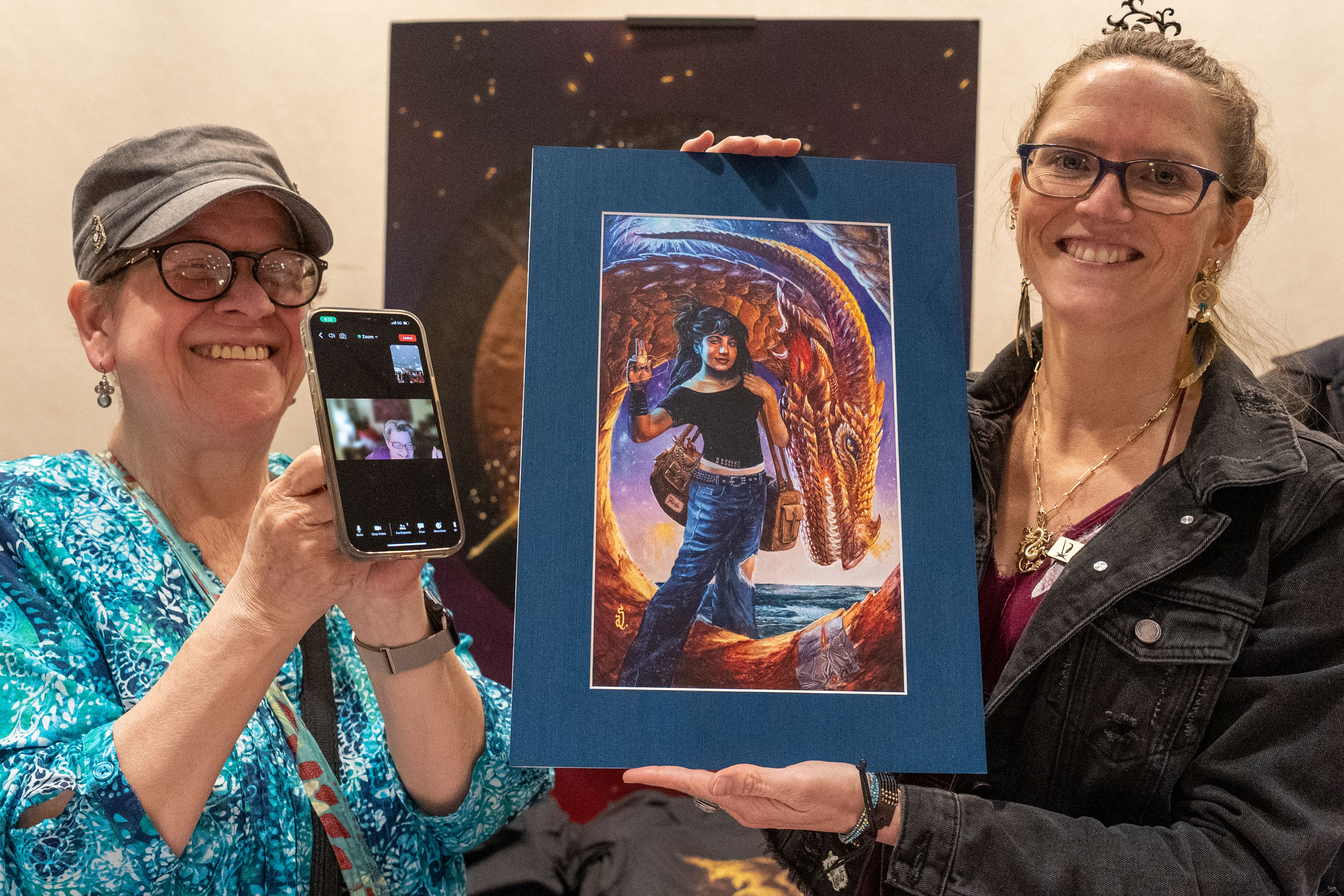











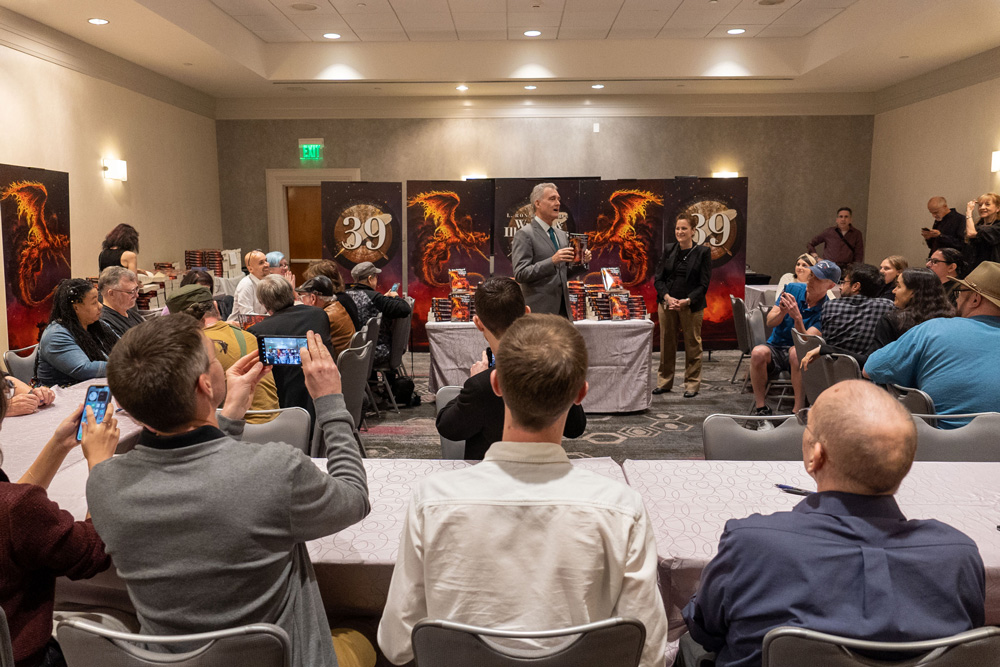
Leave a Reply
Want to join the discussion?Feel free to contribute!